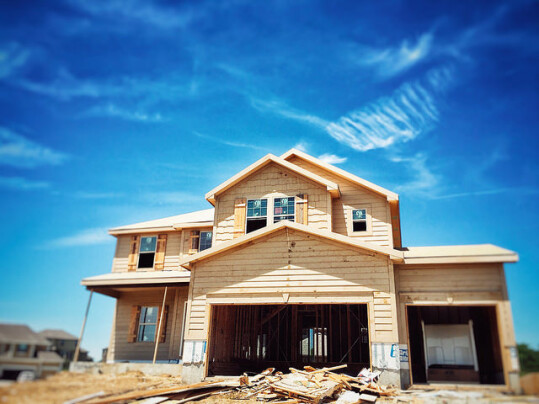People tend to choose where to live based on a few basic factors. Traditionally, we want to live somewhere close to our family, our friends, and our job. But with more Americans working remotely, one of those three factors has been eliminated and it’s led to an increase in prospective home buyers who are considering moving to a new area. The trend began shortly after the coronavirus’ onset but has persisted. In fact, according to one new analysis, 31.4 percent of buyers in April and May were looking to move to a new metro. That’s up from 27 percent last year at the same time. It’s also well above pre-pandemic levels. Affordability seems to be the main motivator. Americans who work and live in areas where the cost of living is higher are looking to take their salary and move somewhere more affordable. But while the idea is a good one, it’s also a common one. And in some cases, the influx of home buyers is now threatening to drive prices higher in those once-affordable neighborhoods. (source)
Archive for June 2021
Housing Outlook Sees Little Change Ahead
Housing market conditions have been pretty consistent over the past few years. Inventory and mortgage rates have remained low while buyer demand and home prices have continued to increase. Even during a global pandemic, conditions remained remarkably steady. There are a number of reasons for this and the latest outlook from Fannie Mae’s Economic and Strategic Research Group highlights a few. But, Doug Duncan, Fannie Mae’s senior vice president and chief economist, says the imbalance between supply and demand is the main issue. “Strong demand for housing continues to run up against a long-running lack of supply,” Duncan said. “We’ve seen this disconnect lead to rapid house price gains over the past year … and many of the supply constraints that home builders face are likely to persist in the near term, so this upward pricing pressure is not likely to be as transitory as many of the current inflation drivers.” In other words, home buyers shouldn’t expect conditions to change too dramatically in the near future. (source)
Mortgage Rates Fall To Lowest Level In Weeks
According to the Mortgage Bankers Association’s Weekly Applications Survey, average mortgage rates fell last week to their lowest level since early May. Rates were down week-over-week across all loan categories, including 30-year fixed-rate loans with both conforming and jumbo balances, loans backed by the Federal Housing Administration, and 15-year fixed-rate loans. The drop led to an increase in demand for mortgage applications, which rose 4.2 percent from the week before. The improvement was driven by a 6 percent jump in refinance activity. Purchase loan demand, on the other hand, rose 2 percent from the week before. Joel Kan, MBA’s associate vice president of economic and industry forecasting, says FHA loans led the gains. “Purchase activity also rebounded, even as supply constraints continue to slow the housing market,” Kan said. “An almost 5 percent increase in government purchase applications drove most of last week’s gain while also tempering the recent growth in loan sizes.” The MBA’s weekly survey has been conducted since 1990 and covers 75 percent of all retail residential mortgage applications. (source)
New Home Market Strong Despite Challenges
When there are more buyers than available homes for sale, home prices rise. That’s why prices spiked last year and have continued increasing into 2021. An already lower-than-normal number of homes for sale fell even lower after the coronavirus hit last March. The resulting inventory crunch, combined with elevated demand from buyers, has been driving prices upward ever since. But, while low inventory isn’t great for buyers, it’s good news for home builders, since building new homes is the quickest way to balance the market and provide options for buyers. So it’s no surprise that the National Association of Home Builders’ Housing Market Index – which measures how confident builders are in the market for new homes – remains strong. Scored on a scale where any number above 50 indicates more builders view conditions as good than poor, the June Index came in at 81. That’s not far below its all-time high, but it is down two points from last month. Why? Well, according to Chuck Fowke, NAHB’s chairman, builders are facing higher costs for materials and it’s making it more difficult for them to build the affordable new homes the market needs. (source)
Getting Approved To Borrow Got Easier In May
Before you can shop for a house to buy, you have to make sure you’ll be able to get a loan. After all, there’s no point in falling in love with a home only to discover it’s out of your price range – or worse, you aren’t able to get approved for a mortgage. That’s why meeting with your lender is the first step of the home buying process. It’s how you know what you can spend on a house and what the terms of your loan will be. But the standards that are used to determine whether and how much you’re able to borrow aren’t fixed. In other words, it can be harder to get approved for a mortgage at some times and easier at others. That’s why the Mortgage Bankers Association tracks mortgage credit availability each month. Their Mortgage Credit Availability Index measures whether lending standards have tightened or loosened. In May, the index found that lending standards loosened, making it easier for prospective home buyers to secure financing. In fact, mortgage credit is now more available than its been since the pandemic began last year. And that’s good news for home buyers, since it means they’re more likely to be approved when applying for a loan. (source)
Lenders Report Growing Demand From Buyers
Whatever challenges today’s housing market has, they haven’t deterred home buyers. Buyer demand spiked last summer and hasn’t let up since. In fact, a newly released survey of mortgage lenders found an increasing number of them say they’ve seen buyer demand grow over the past three months. Doug Duncan, Fannie Mae’s senior vice president and chief economist, says low mortgage rates have kept buyers interested. “Purchase mortgage applications have trended slightly lower in recent weeks; however, they remain fairly strong, and higher than the pre-pandemic level, likely because of continued low mortgage rates,” Duncan said. “Our June National Housing Survey released early this week showed that consumer demand remains strong since ‘home purchase on next move’ is at a survey high, despite the challenges of accelerated home price appreciation and insufficient supply.” But while they’ve seen more demand over the past few months, lenders are cautious about the next three. In fact, their expectations for buyer demand in the coming months is relatively flat, if not slightly lower than last quarter. (source)
Has The Second-Home Buying Boom Started To Cool?
Having a second home is a dream for a lot of people. Who doesn’t want somewhere beautiful they can escape to when they need a break or want to flee bad weather? But while we dream about it, owning a second home is expensive and, if you don’t have the ability to use it often enough, might not be worth the cost. Last year, the coronavirus changed that equation for a lot of Americans. The increasing number of us who were able to work remotely could suddenly justify the extra expense, since we could spend more time in our second homes than ever before. For that reason, second-home sales skyrocketed in 2020. At times, rising over 100 percent from year-before levels. But a more recent analysis has found second-home sales falling drastically from last year. Does that mean the second-home sales boom has started to cool? Well, maybe. As things increasingly get back to normal and more of us have to return to the office – at least, part of the time – the lure of vacation homes may fade to pre-pandemic levels. But this most recent analysis is comparing May sales to May 2020, when the pandemic was still in its first wave and demand had yet to rise. That means, while the boom may have cooled, it might not have dropped as drastically as it appears. (source)







